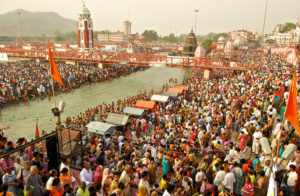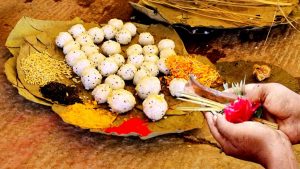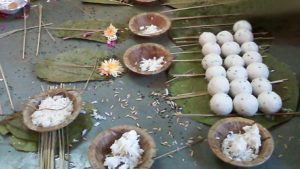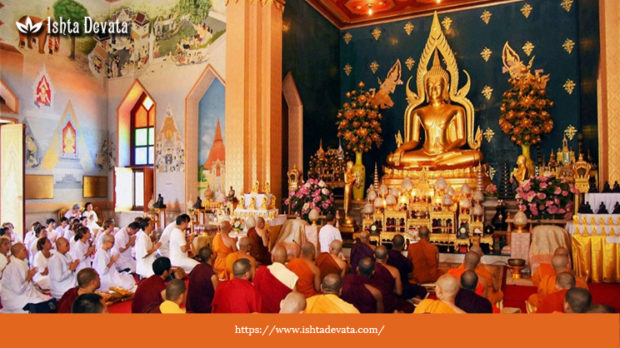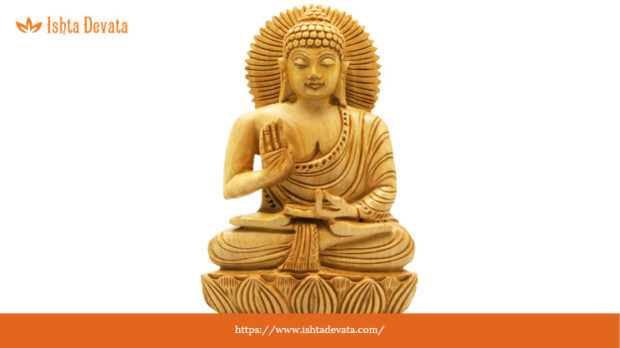Buddha Purnima – Legend and Rituals
Buddha Purnima (10-May-2017)
Buddha Poornima is the most prominent Buddhist festival celebrated all over the world. Falling on the full moon day (Poornima) in the month of April/May, Budha Poornima marks the birth anniversary of Gautam Buddha, the founder of Buddhism. Buddha is believed to have been born, enlightened and had also attained nirvana (salvation) on this special day. Few also regard Buddha as the ninth incarnation of Lord Maha Vishnu.
Rituals during Buddha Purnima
People across many countries celebrate Buddha Purnima by organizing several events honouring Buddha’s exemplary life. Devotees visits monasteries, listens sermons, stories, stanzas, from several Buddhist scriptures as part of the festive celebrations. They also offer various items such as foods, clothes, money, gifts or others to the poor and the needy.
Buddhist all over the world pay their respects to Buddha by offerings flowers, incense, candles and Prasad. They also listen to devotional music, chant verses from the holy scriptures and attend religious discussion on this auspicious day. Buddhism prominently works on five major principles propagated by Lord Buddha called “The Panchsheel”. The peaceful celebrations of Buddha Poornima stands testimony to the faith Buddhists have on their religion. A number of religious rituals are followed throughout the day with the holy Abhishek performed on the Lord with milk and scented water. Devotees also worship the sacred Bodhi tree under which Lord Buddha is believed to have got enlightened.
The city of Bodh Gaya in Bihar and Sarnath in Uttar Pradesh are the two eminent places in India associated with Buddhism. Other than these cities, places like Ladakh, Sikkim, and Arunachal Pradesh too house significant Buddhist population. Hence these are the major regions within India where Buddha Poornima is celebrated with utmost joy and devotion.
Life of Buddha
According to Myths, Queen Mahamaya, the mother of Gautham Buddha gave birth to him on the Vaishakh month of the year 544 BC. When the Queen was on her way from Kapilavastu to her hometown at Devdaha, she had halted under the shade of two sal trees at Lumbini, for giving birth to the Buddha. On her return back to Kapilavastu after birthing the boy, an elderly saint called Asit, visited the king’s palace. The saint was also the official royal court astrologer and predicted that the child would redeem the world.
The royal couple named the child Siddhartha, who upon attaining enlightenment was later famously called the Gautam Buddha, meaning Gautam, the wise one. A short while later, the Gauthama’s mother passed away owing to illness. There after, Gauthama was brought up by his mother’s sister who was also his stepmother.
Gautama was not like the other children who would love to play. He was always a loner and was often lost in deep thoughts. When Prince Gautam attained manhood, his father arranged his marriage to a beautiful Princess named Yashodhara in order to ensure that his son was occupied with all the worldly pleasures, just like any other human being. However, Gautama showed no interest towards all these materialistic things in life. He was determined in his goal towards truth and righteousness.
Despite being a Kshatriya Prince, Gautama never hunted birds and animals. He rather took steps for protecting them. However, there were several other worldly issues that began to trouble Gautama. One day, he happened to see an fragile old man who was not even able to walk. The next day, he came across a very sick man lying unconscious on the ground. Such pathetic sights made him feel bad. He would ask a lot of questions to himself like “What is pain? Why is there so much pain and suffering in the world? Is there a way of avoiding these?”
Gautama happened to see an ascetic one day who looked so calm and completely at peace. That is when he got inspired to become an ascetic himself so that he could find the solution for various worldly problems like old age, sickness and death. Thus Gautama decided to renounce this worldly life and attain sainthood. He threw away all his royal luxuries and went out into the dark in quest of knowledge and wisdom.
Gautam visited several religious centres seeking answers to his queries but nothing proved fruitful. Finally he decided to undergo penance in a forest situated at the edge of River Niranjana, near Gaya. He practised strict meditation for about six years but felt there wasn’t any improvement. He then realized that enlightenment could not come through mortifying the flesh. On that very day, a woman named Sujata is said to have offered him a bowl of kheer, while a grass cutter had provided him a stack of grass to sleep on. Gautama gracefully accepted both the gifts and took position under a Bodhi tree. He vowed to stay there until finding answers to his puzzles.
Gauthama is believed to have found answers to his queries on a full moon night of Vaishakha month Coincidentally the full moon on Vaishaka month happens to be his birthday. He realised the four truths of life – the existence of pain and suffering, their causes, the need to overcome them and the means of doing so. Hence Siddartha transformed into Gautam the Buddha or the Enlightened One on his thirty-fifth birthday.
On getting enlightened in the holy place of Gaya, Gautham Buddha then proceeded towards Sarnath, a town near the holy city of Varanasi. Five men were believe to have become his disciples here, to whom he taught the five truths of life. He also formed a Singh or community here to propagate his preaching. Buddha also travelled to far away places propagating his ideologies on truth. As years passed, his preaching were widely accepted by many around the world, including many religious saints scholars and even some kings. Buddha also visited his home later as a monk. His father, stepmother, wife and son had also joined his preaching centre subsequently. On the Vaishaak Poornima day of the year 483 BC, Gauthama Buddha is said to have attained the state of Nirvana(Salvation). Thus the day of Vaishakha Poornima (full moon day) assumes greater significance in Buddhism as it is the day when Gauthama Buddha was born, enlightened and attained Nirvana.
-Radhika T V
Reach us to be a part of our whatsapp spiritual reminder group
